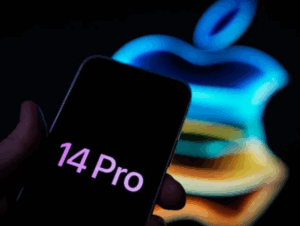Apple Accelerates the Switch to USB-C and Removes Lightning Models from Its Store: What Happens to Your Old iPhone?
The decision accompanies the launch of the iPhone 17 and aligns with new European regulations, marking the end of an era that began in 2012.
“Sell your old iPhone before it’s too late!”
With the official announcement of the iPhone 17, Apple has removed iPhone 14 and iPhone SE (3rd generation) from its store, officially ending the Lightning port, a defining feature in Apple devices for over a decade.
Apple often narrows its product lineup to highlight its latest releases. However, for collectors and tech enthusiasts, the final iPhone models with Lightning ports might become sought-after collectibles.
So you should to get rid of your old iPhone before it’s too late. In our humble opinion, iGotOffer.com is the best platform to sell your used and old iPhone
Apple Devices Coveted by Collectors
The history of digital collecting has shown that certain devices, especially those marking the end of a technological era, can gain significant value over time.
The most famous example is the first iPhone, launched in 2007, with sealed units auctioned for over $50,000. Its appeal lies in its status as a pioneer and a symbol of cultural transformation.
While neither the iPhone 14 nor SE (3rd Gen.) had the disruptive impact of the original model, their position as the “last with Lightning” gives them unique appeal. Sealed units or limited editions may appreciate in value among collectors.
As Apple fully transitions to USB-C, these devices will remain as remnants of an era that shaped mobile design and functionality in recent years.
Additionally, they remain functional options for those hesitant to switch to newer models. Apple will continue to provide technical support for the coming years, though availability will gradually decline.
WhatsApp Will Stop Working on Several iPhone Models Starting in June
The technological transition isn’t just driven by Apple’s moves—WhatsApp, the world’s most used messaging app, has announced that starting June 1, 2025, it will no longer work on several older iPhone models.
This decision affects all devices running iOS 12 or earlier, including:
- iPhone 5, 5c, 5s
- iPhone 6, 6 Plus, 6s, 6s Plus
- iPhone SE (1st generation)
Meta, WhatsApp’s parent company, explained that the change is necessary to maintain up-to-date security and performance standards.
Each new app version introduces higher processing demands and enhanced data protection features. Older devices, due to hardware and software limitations, can no longer meet these requirements.
This means that users with these devices will no longer be able to open, update, or install WhatsApp, effectively cutting off access to the platform.
USB-C
For many, this will mean not only the loss of a personal communication tool but also an essential resource for work and daily life.
These shifts in the tech ecosystem are part of the continuous evolution of digital innovation.
Both decisions have real-world effects on millions of users—ranging from those seeking affordable devices to those who rely on digital tools for their everyday lives. However, they also invite reflection on the pace of innovation and its impact beyond mere consumption.
Technology moves forward relentlessly, pushing manufacturers, platforms, and users toward a safer, more unified, and more functional ecosystem. At the same time, it redefines the value of what’s left behind, turning once-common products into collector’s items rich in history and symbolism.
The removal of the iPhone 14 and iPhone SE (3rd Gen.), along with WhatsApp discontinuing support for several older models, marks a turning point in the technological cycle.
Apple is officially closing the chapter on the Lightning connector, driven both by external regulations and its own strategy of constant renewal.
See also:

